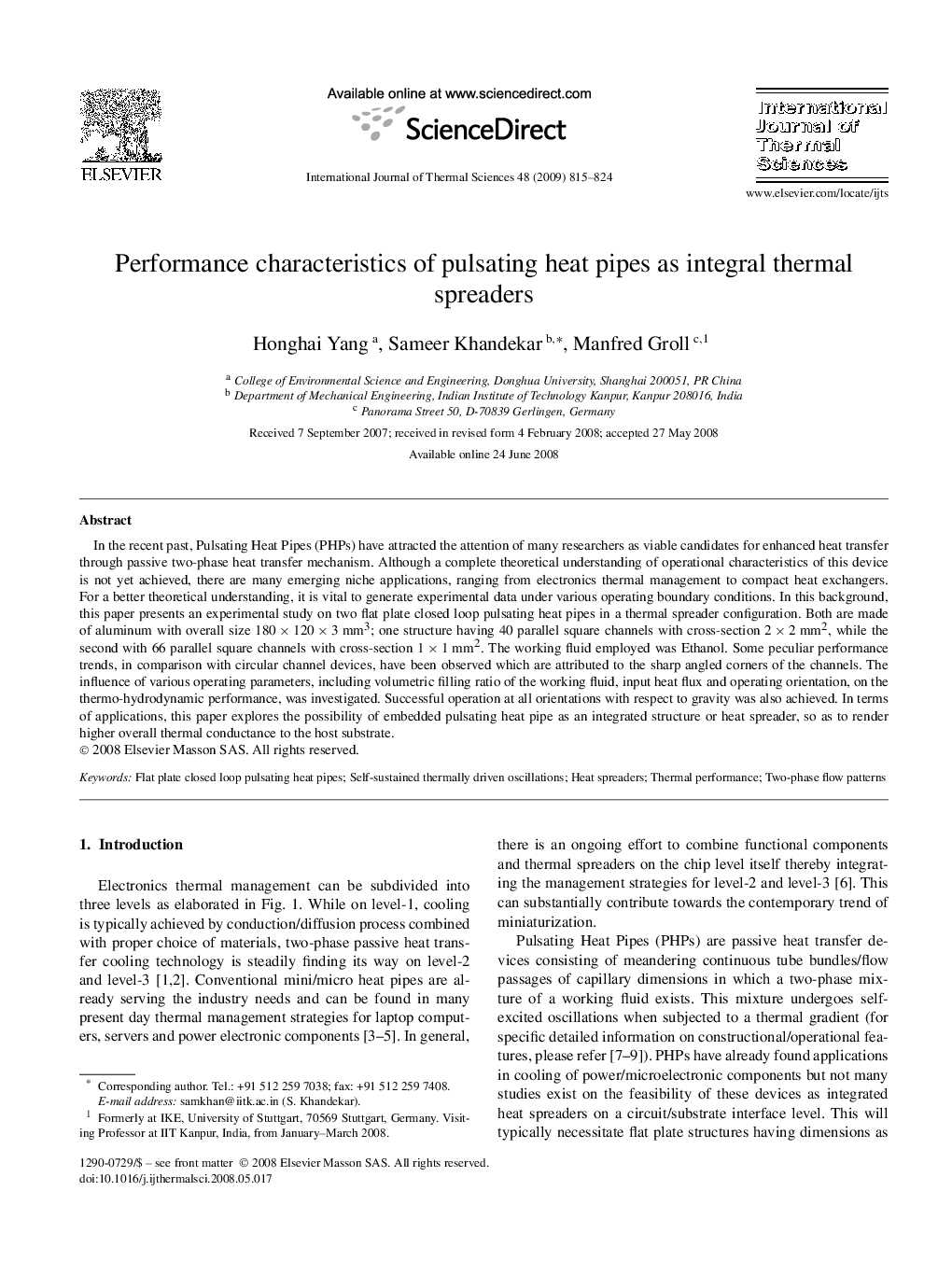| Article ID | Journal | Published Year | Pages | File Type |
|---|---|---|---|---|
| 669835 | International Journal of Thermal Sciences | 2009 | 10 Pages |
Abstract
In the recent past, Pulsating Heat Pipes (PHPs) have attracted the attention of many researchers as viable candidates for enhanced heat transfer through passive two-phase heat transfer mechanism. Although a complete theoretical understanding of operational characteristics of this device is not yet achieved, there are many emerging niche applications, ranging from electronics thermal management to compact heat exchangers. For a better theoretical understanding, it is vital to generate experimental data under various operating boundary conditions. In this background, this paper presents an experimental study on two flat plate closed loop pulsating heat pipes in a thermal spreader configuration. Both are made of aluminum with overall size 180Ã120Ã3 mm3; one structure having 40 parallel square channels with cross-section 2Ã2 mm2, while the second with 66 parallel square channels with cross-section 1Ã1 mm2. The working fluid employed was Ethanol. Some peculiar performance trends, in comparison with circular channel devices, have been observed which are attributed to the sharp angled corners of the channels. The influence of various operating parameters, including volumetric filling ratio of the working fluid, input heat flux and operating orientation, on the thermo-hydrodynamic performance, was investigated. Successful operation at all orientations with respect to gravity was also achieved. In terms of applications, this paper explores the possibility of embedded pulsating heat pipe as an integrated structure or heat spreader, so as to render higher overall thermal conductance to the host substrate.
Related Topics
Physical Sciences and Engineering
Chemical Engineering
Fluid Flow and Transfer Processes
Authors
Honghai Yang, Sameer Khandekar, Manfred Groll,
